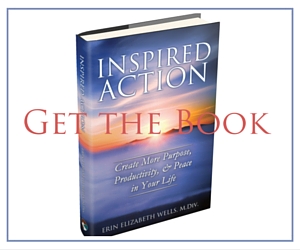Since taking off on our grand adventure… and similarly since having our Pumpkin… I’ve realized how amazingly powerful checklists can be. There are SO many repetitive actions to taking care of babies and toddlers. Making sure you have the long list of items that you might need in your diaper bag is the biggest one that we experience on a daily basis. Glory, the sadness that can come from forgetting to refill the goldfish crackers in our bag *face palm*!
Similarly, I’ve starting capturing our packing checklist to help us with our digital nomad transitions. I’m hoping it will help us avoid leaving things behind in places unintentionally. When your things get merged with those of the AirBnB host, and you’ve been looking at that same mix of items for months, it’s easy to forget that the clock next to your bed is yours rather than theirs (yes, we do bring our digital projection clock with us.)
Having been reminded of how much easier things become when you have a checklist to take some of the mental pressure off, I decided that it was time to share another excerpt from my book Inspired Action: Create More Purpose, Productivity, and Peace in Your Life. What follows is Chapter 22: Checklists for Everything, which can help you both to recognize when and where a checklist might make your daily life easier, as well as the many different ways that you can keep that information to make it super valuable and accessible for you when and where you need it.
Where might you want to create a checklist for a common activity in your life? Read on… and you might be surprised to imagine somewhere new!
Checklists for Everything
Imagine getting on a plane, sitting in your seat, buckling your seat belt, beginning to get comfortable…and then it hits you: the thing you forgot to pack has bubbled up to your awareness, and you are mentally (or actually) smacking yourself in the head and muttering curse words under your breath. Perhaps the same feeling has happened to you in the car on the way to your kid’s sleepover party or on the way into your workplace for an important client meeting.
Whenever these moments have hit you—and we’ve all had them—they are the moments when you recognize that trying to remember everything by relying solely on your own brain generally leads to disaster. And, as my mother tells me, it only gets worse as we age. The simplest things become increasingly hard to recall at the appropriate moment.
This chapter is dedicated to helping you minimize those “D’oh!” moments in your life. What’s the secret? Checklists! The hardest part about many of our routine tasks is, well, remembering the routine! So, don’t make your brain work any harder than it needs to. How much time do you think you will save every day, week, month, or year if, rather than redoing the intensive thinking process for what needs to happen (or to be packed) each time a certain activity occurs, you just scanned down a checklist and grabbed what you needed?
Do you want to make it even easier? For many standard activities, such as packing for vacations, starter checklists are available online. Just do a web search for “vacation packing checklist,” and you’ll be delighted to see that many people have done the hard work for you. Use an online list to give you a head start on creating your own.
When to Use Checklists
Here is a selected list—by no means an exhaustive one—of occasions when checklists are helpful:
- When you pack for trips. Whether it’s a vacation, a business trip, or a camping trip, most people have a specific set of items that they want to bring—some of which are likely essential to the trip’s success. Create a separate checklist for each type of trip you go on. I have a list for attending conferences, business trips, taking vacations, and family weekend getaways.
- When you prepare for business meetings. Do you have a weekly staff meeting, or do you meet with prospects or clients frequently? I bet certain items are essential to bring, and certain activities are necessary to do before, during, or after those meetings. Why not create a checklist to help you prepare and stay on track at those times?
- When you help your kids (or partner) prep for activities. Create separate packing/prep checklists for each of your children’s activities—one for standard school activities, another for soccer, another for music lessons, and so on. Then everyone can be confident that important pieces aren’t being left behind when you walk out the door. Imagine the time you’ll save by reducing those “Mom, I forgot my…” calls.
- When you replenish your diaper bag. A member of my staff swears by the value of her diaper-bag-packing checklist for ensuring that all baby-related contingencies are covered.
- Seasonal Projects or Cycles. There is a certain list of projects that you do at the beginning of each school year or prior to the holiday season? Perfect time for a checklist: Home decorations, gifts, holiday party planning, holiday cards, thank you cards, holiday meal preparations, etc. Since you only do these projects once per year a checklist can make it so much easier to remember all the essential projects or tasks relevant to each of them.
- When you learn a new activity or process. Have you ever been assigned new responsibilities at work or been taught a new computer system? These are great times to create check-lists to help you reinforce and remember the needed steps to produce the intended result. If you’re lucky, someone has al-ready documented the process for you, but if not, create a simple checklist for yourself and then share it with your boss or co-workers. You are likely not alone in needing a cheat sheet, and you might help your entire team implement the process better.
What Checklists Look Like
There are tons of systems that you could use to create your checklists. The important thing to remember is that it must be reusable. The whole point is to do the thinking once and then make the task easier for every time it happens in the future. Thus, scribbling your checklist on the back of an envelope will not be a long-term improvement. Here are some good options:
- Create a Word document or Evernote Note. You can print the list and check off items each time the activity arises. We use this type of list with client packets and mailings so that our administrative staff ensures that all necessary items get included.
- Create forms. While this is similar to the Word doc suggestion above, forms walk you through a process—for example, prep for an upcoming meeting—and bring all the necessary information together so that you feel confident and ready to go. We use forms for our staff-meeting prep. These forms contain several questions that prompt staff members to think ahead about issues, tasks, or questions that they want to discuss during the meeting. Using the forms helps staff members thoroughly prepare for the meeting and keeps the meeting itself running more smoothly.
- There’s an app for that. There are a lot of great checklist apps for your mobile device; just do a search. Apps that are specific to packing lists come preloaded with possible items and activities for pre- and post-trip, while more generic programs allow you to create custom lists, check things off, and then reset the list when you’re done.
- Create wipe-off lists. Print or write a list, and then get it laminated. (Most print/copy centers have laminating machines.) Then you can use dry-erase markers to check items off and just wipe it fresh when you’re done. I’ve seen this work very well for kids’ checklists. You could even create a little flip book of index card–size checklists for each of your kids’ activities. By including stickers or images on the cards, you can add visual interest and help even very young kids use the checklist effectively.
- Use a whiteboard. If you want a semipermanent list at home or in your office, grab an appropriately sized whiteboard, write the items or prompting questions with a Sharpie (permanent marker) or adhesive letters, and then keep a dry-erase marker nearby to check items off regularly. The permanent marker will stay in place when you wipe with a dry paper towel, but if you want to remove it, you can use nail-polish remover (acetone). Use the adhesive letters for a more permanent version, or a chalkboard with paint.
- Have notepads printed. It’s a lot easier to have short-run notepads or other products created these days. Once you’re pretty sure you’ve got a particular process or list nailed, create some standard notepads and have them printed up by a company like Vistaprint. This inexpensive solution might be appropriate if you want to make a list easily available to your entire company (or family) or to keep a stack of short check-lists immediately on hand for yourself.
Really, any system that provides a permanent list and allows you to refer to that list easily can be a checklist. Can you think of other methods for creating checklists in your life?
It’s time to save your brainpower for where it matters most. Give your brain a break from trying to remember the easy stuff, and dele-gate that responsibility to a checklist.
Next Actions
- Brainstorm all the times in your life (or in your family’s or team’s lives) when a checklist might be valuable. Ask others to help you brainstorm, if appropriate. When was the last time you had one of those “D’oh!” moments?
- Choose one of these times and create a checklist of items or questions that will help the activity run smoothly. Search online for starter lists that will get you going. Ask for input from family, friends, or teammates here too. Many minds make light work.
- Identify and implement the best checklist methodology for that situation. Different methods may be appropriate for different situations, depending on who needs access to the information.
If you found this excerpt from Chapter 22 of Inspired Action valuable, then you might want to grab a copy of the whole book for yourself today!
Inspired Action provides 50 short, actionable chapters to help you create more purpose, productivity, and peace in your everyday life. If you get it and love it, then please leave a 5-star Amazon review too!




